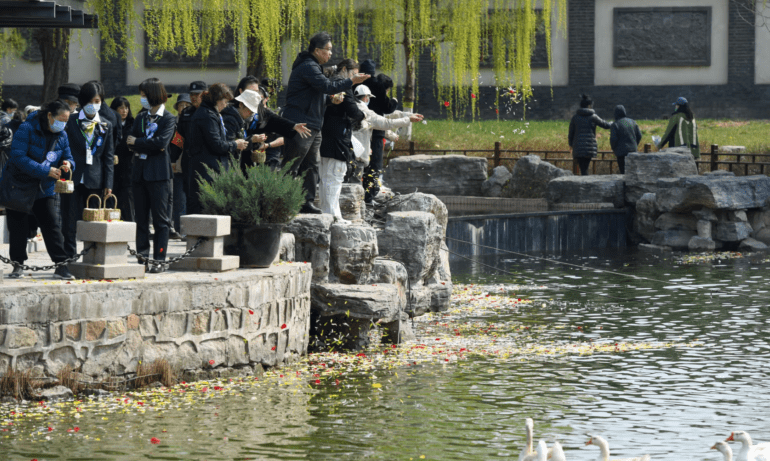- Chinese mourners are turning to AI to create digital avatars of departed loved ones.
- This trend coincides with the annual tomb-sweeping festival, marking a modern approach to remembrance.
- Notable instances include a singer using AI to resurrect his late daughter and SenseTime presenting a speech from its deceased founder using a digital clone.
- The market for “digital humans” in China was worth 12 billion yuan in 2022 and is expected to quadruple by 2025.
- Controversy arises over the use of AI to recreate deceased individuals, prompting ethical and legal debates.
Main AI News:
Chinese mourners are increasingly turning to artificial intelligence (AI) to preserve the memories of their departed loved ones, marking a new trend in commemorating the deceased. As families gather to honor ancestors during the annual tomb-sweeping festival, a modern approach to remembrance emerges.
For a nominal fee, Chinese citizens can now create lifelike digital avatars of their relatives, as advertised online. This year, on the occasion of the tomb-sweeping festival, innovative mourners are embracing AI to connect with their dearly departed.
At the forefront of this movement is Taiwanese singer Bao Xiaobai, who utilized AI to “resurrect” his late daughter, despite having only a short audio recording of her voice. After more than a year of experimentation, he successfully produced a video of her singing, providing solace to his grieving heart.
The fascination with digital replicas coincides with the rapid expansion of China’s AI industry, particularly in the realm of human-like avatars. The market for “digital humans” was valued at 12 billion yuan in 2022 and is projected to quadruple by 2025. This surge is partly fueled by the country’s vast army of livestreamers, who are increasingly employing AI to promote products around the clock.
SenseTime, a prominent AI firm, recently showcased its prowess in this domain by presenting a speech from its deceased founder, Tang Xiao’ou, at the company’s annual meeting. Tang’s digital clone, trained on extensive data, delivered an uplifting message, embodying the potential of AI in preserving legacies.
The tomb-sweeping festival serves as a prime occasion for leveraging such technology. Software developers claim to have facilitated reunions between over 600 families and their departed kin this year alone, underscoring the growing demand for digital afterlives.
However, the use of AI to recreate the deceased has sparked controversy. Social media users repurposed old footage of deceased celebrities, prompting ethical debates. While some find solace in these digital recreations, others, like the parents of late singer Qiao Renliang, denounce them as painful reminders of loss.
Legal experts advocate for regulations to mitigate the emotional distress caused by such content, emphasizing the need for sensitivity in handling digital legacies. Yet, as mourners seek novel ways to honor the departed, the evolution of digital afterlives outpaces regulatory frameworks, reflecting the complexities of modern mourning practices.
Conclusion:
The growing trend of using AI to remember and ‘revive’ departed loved ones signifies a burgeoning market for digital afterlife services. As mourners seek innovative ways to honor the deceased, there’s a clear opportunity for tech companies to develop ethical and sensitive solutions that cater to this evolving need. Additionally, regulatory frameworks must adapt to address the emotional complexities surrounding digital legacies, ensuring the responsible and respectful use of AI in mourning practices.

